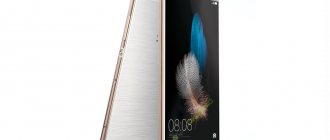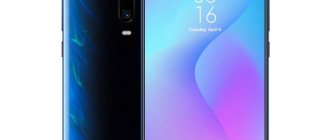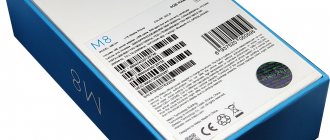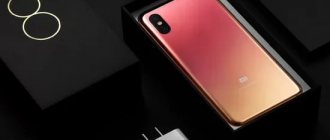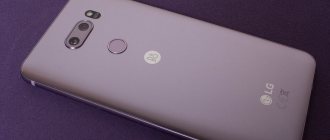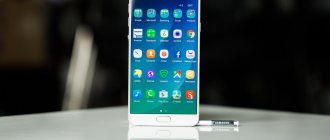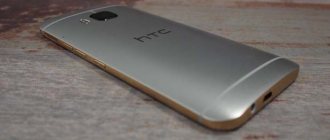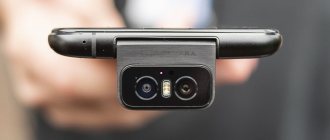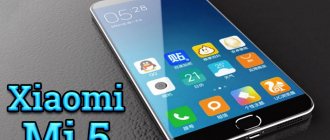The new flagship smartphone of the Chinese company Huawei differs from last year’s, first of all, in its updated “rounded” design. In addition, it received a powerful processor, a dual camera under the Leica brand with optical stabilization, support for fast charging and the latest version of Android. Vesti.Hi-tech figured out all the features of Huawei P10.
The next flagship duo from Huawei - the 5.1-inch P10 and 5.5-inch P10 Plus - was first presented at MWC 2020 in Barcelona. Both models received not only an updated design, including bright colors and three body finishes, but also the most modern software and hardware components. The company hopes to repeat the success of last year's P9 Plus, again focusing on photo capabilities. The new cameras, including software algorithms, were created in collaboration with the leader in the production of optical systems and precision mechanics devices – Leica Camera AG.
Specifications (VTR-L09)
- Display: 5.1″ (64 x 113 mm), IPS, capacitive multi-touch, AMOLED display with Full HD resolution (1920x1080), 2.5D protective glass Corning Gorilla Glass 5, 432 ppi
- Operating system: Android 7.0 Nougat with EMUI 5.1 shell (+ interface adjusts to the color of the device)
- Processor: Kirin 960 (1.8 GHz clock speed, 4x ARM Cortex-A53 @ 1844 MHz, 4x ARM Cortex-A73 @ 2362 MHz)
- Video processor: Mali G71 MP8
- RAM: 4 GB
- Internal memory: 64 GB
- Memory card: microSD (card capacity up to 256 GB) - instead of the second Sim
- SIM: 2 Nano-SIM (alternate operation) or 1 Nano-Sim + microSD
- Main camera: Leica Dual Camera 2.0 (3968 x 2976) - 12 MP (color) + 20 MP (monochrome) sensors with f/1.8 | f2.2, 3.95mm focal length, phase-detection hybrid autofocus, optical image stabilization, 2X hybrid zoom, PDAF, dual-LED flash, 4K video recording
- Front camera: Leica 8 MP (3264 x 2448), F/1.9, focal length 3.36 mm
- Audio: Yamaha and Harman Kardon audio system, 24-bit/192kHz audio, XviD/MP4/H.265 player, MP3/eAAC+/WAV/Flac player, active noise reduction system, dedicated microphone + stereo headset
- Communication: GSM, 4G LTE Cat. 13/12, NFC, Wi-Fi 802.11 a/b/g/n/ac, Wi-Fi Direct, hotspot, 2×2 MIMO, Bluetooth 4.2 WiFi 802.11ad - so-called. WiGig,
- Navigation: GPS, A-GPS, GLONASS, BDS, GALILEO, Huawei Geo Technology
- Ports: micro-USB Type-C, mini-jack 3.5 mm
- Sensors: light sensor, proximity sensor, accelerometer, compass
- Other functions: voice dialing, voice control, airplane mode, flashlight
- Fingerprint scanner: front sensor + multifunctional Home button
- Battery: 3,200 mAh (non-removable, lithium polymer, Huawei SuperCharge)
- Dimensions: 145.3 x 69.3 x 6.98 mm
- Weight: 145 g
- Case materials: metal, glass
- Color: Pantone-designed Greenery, Royal Blue, Gold, Silver, Graphite Black + China-exclusive Pink and Ceramic White
- Contents: smartphone, USB cable – micro-USB Type-C 1.0, AC adapter (5V – 2A / 4.5V – 5A / 5V – 4.5A), wired headset, plastic bumper case, instruction manual
- Price at the time of testing: from 649 €
- Announcement: February 2020
Comparison: Honor 9 vs Huawei P10
On June 27, a ceremony was held in Berlin to showcase the Honor 9, which combines the best elements of the Huawei P10, which was presented at the most recent MWC exhibition in Barcelona. Thus, it would be wise to compare these two smartphones to know which one offers better value for money. We tried to answer this question by sharing our hands-on experience from Honor 9 vs Huawei P10 reviews. This is what happened.
Read more : Honor 9 review | Huawei P10 review;
Honor 9 VS Huawei P10: Design and build quality
Honor 9…
What first struck us about the Honor 9 was the smartphone's attractive curves, which create a reflective effect. The finish is very sleek, the dual sensor camera does not take up much space on the back, the design is very attractive and also ergonomic. The similarities with the Galaxy S7 are obvious, but the fact remains that Honor has done an excellent job with the new device.
Honor 9 subtly combines metal and glass.
The fingerprint scanner is located at the front of the device, just like on the P10. The back panel, which is made of glass, easily attracts fingerprints. Fortunately, there are two possible solutions: wipe it with a cloth from time to time or use the transparent case that thoughtfully came in the box with the phone. As for the rest, the Honor 9 is slightly thicker and heavier than the Huawei P10. Editor's comment : The design of Honor 9 is much more attractive than the Huawei P10.
Huawei P10…
And while the Honor 9 is reminiscent of the Samsung Galaxy, the Huawei P10 is more inspired by Apple's iPhone, especially on the front side. In this case, it is difficult to talk about the originality of the design. The Huawei P10 doesn't use the new screen formats of the LG G6 and Galaxy S8, but the frames are thinner than the Honor 9. There are no build quality issues.
One of the advantages of the Huawei P10 is its more compact size, which makes it easier to handle.
The metal back of the phone resists fingerprints and makes the phone less susceptible to damage from drops. The phone also sports a more subdued design (the black model remains the most popular) because it's not as shiny. Finally, while not receiving IP68 certification, the smartphone is splash-resistant thanks to its nano-coating. Editor's note : Huawei P10 is more discreet and has the advantage of not attracting fingerprints.
Honor 9 VS Huawei P10: Display
Honor 9…
Honor 9 offers a "compact" screen despite the market trend.
It features a 5.15-inch IPS display with Full HD resolution. This display has several advantages, including brightness, the ability to improve sunlight readability, the ability to adjust color temperature in the settings menu, and even an oleophobic coating that protects the screen panel from fingerprints. Flaws? This is not an ideal solution for virtual reality fans. Editor's Note : By introducing an oleophobic coating, Honor demonstrated that the company took user complaints into account.
Huawei P10…
Let's be honest, the differences between the screens are minimal.
The P10 also offers Full HD at 5.15 inches (IPS). The contrast is not as good as AMOLED screens. As for the rest, you will also find the same settings as on the Honor 9 (except for the mode that allows you to read more easily in the sun). The P10's display adjusts to provide superior brightness, making it easy to read outdoors. Editor's Note : The Huawei P10 delivers the perfect color temperature, if that's important to you.
Honor 9 VS Huawei P10: Software
Honor 9…
As for the software interface, there is no real competition between the Huawei P10 and Honor 9.
Both devices run Android Nougat and EMUI 5.1. The system works well and offers various personalization options, such as activating navigation buttons. The Honor 9 also offers a few little goodies, such as the ability to invert the layout of the quick buttons, which are also backlit, or a pre-installed Phone Clone app to make it easier to transfer information from your old device (under More Options - Data). Editor's comment : EMUI is one of the best interfaces for Android.
Huawei P10…
As we explained above, the Huawei P10 offers the same interface as the Honor 9. It also offers GoPro's Quik app for creating video montages from photos, videos and music stored on your device in just a few seconds.
You can also use the Home button, which also works as a fingerprint scanner that you can use for navigation. The interface remains smooth as Huawei is actively working on improving it. Editor's comment : The Huawei P10 interface works great.
Honor 9 VS Huawei P10: Sound
Honor 9…
The Honor device has a single mono speaker located at the bottom right corner of the smartphone. As President George Zhao explained, the manufacturer was inspired by youth's love for music and decided to partner with Monster to improve sound quality. The result: the volume is significantly increased, and when you listen to music or play games, the sound remains clear.
Huawei P10…
As usual, the sound is very good on the Huawei, despite only having one speaker. It is powerful, and all its capabilities are revealed at medium volume levels. Huawei didn't collaborate with Monster on audio development for this phone, but that doesn't matter.
Honor 9 VS Huawei P10: Performance
Honor 9…
In terms of performance, the two Chinese smartphones are not very different from each other.
Cause? They have the same hardware components: eight-core Kirin 960 processor (four Cortex-A73 cores clocked at 2.4 GHz and four Cortex-A53 cores clocked at 1.8 GHz), G71 Mali-MP8 GPU, 4 GB of RAM and 64 GB of internal memory, expandable via MicroSD. With daily use, you will not experience any problems with gaming performance, multitasking or other tasks. It will not overheat while in use or while charging. Editor's comment : The Kirin 960 processor is compared to the Snapdragon 835.
Huawei P10…
It has the same specifications as Honor 9. Thus, they have the same performance and smoothness for everyday activities (gaming, surfing, multitasking...).
There are no problems with slowdown or lag. The Huawei P10, thanks to its metallic finish, doesn't get as hot in your hand as the Honor 9 does when it's in heavy use. Editor's note : The Huawei P10 does not get hot to the touch, even with intensive use.
Honor 9 VS Huawei P10: Cameras
Honor 9…
The Honor 9 camera will not disappoint you. With a dual main camera (20 + 12 MP) and f/2.2 aperture, the smartphone is capable of capturing excellent photos with accurate colors and rich details. In good lighting conditions, at least.
The manufacturer also offers a night mode, but you'll need a steady hand to avoid blur. The camera also allows you to save photos in RAW format, activate x2 hybrid zoom (which depends on the use of two lenses), videos in 4K or Full HD up to 60 frames per second, along with Pro Video mode. Honor 9 allows you to enjoy your photos and videos by manually editing them. You can also create your own avatar in 3D Creator. The camera app is fast, user-friendly and also adaptive for less experienced users.
Huawei P10…
On the back, you'll find the same dual camera setup as the Mate 9, with a 20MP monochrome lens and a 12MP RGB Leica color lens. By default, Huawei P10 offers 12MP photo capture. In this case, part of the information comes from the 20 MP lens, and the other part from the 12 MP lens. The problem is that the large sensor's image is minimized to 12 megapixels in order to be able to apply colors.
In the end, the result is a bit disappointing with poor quality parts. In our opinion, the result is slightly better than the Honor 9, but we think Huawei should reconsider its dual camera concept. The advantage is that a monochrome lens allows you to take high-quality photographs in black and white. In any case, we will compare their photos in a more detailed article.
Honor 9 VS Huawei P10: Battery
Honor 9…
The 3,200 mAh battery, rechargeable with Huawei's Quick Charge, allows you to work all day long with 15 to 20 percent battery life. A result that is not particularly surprising, nor does it stand out compared to other flagships. In the benchmark test, Honor 9 lasted 6 hours and 58 minutes.
Huawei P10…
The P10 also has a 3200mAh battery. And while battery life is disappointing (you'll have to charge it before the end of the day if you use it heavily), the P10 is compatible with Super Charge technology. Thanks to this, the battery can be charged quickly: 30 minutes of charging allows you to reach 50 percent of the battery and this is a huge plus!
Honor 9 VS Huawei P10: Conclusion
Honor 9…
Honor 9 seems to be the better option as both the smartphones are no different from each other, at least in terms of software and hardware. The appearance of the new Honor smartphone seems more attractive, but even more attractive than its shape is its price. Considering its pricing at around 30,000 rubles, the question arises: why spend more on a smartphone that is identical, but does not last as long?
Huawei P10…
Despite the release of Honor 9, Huawei P10 is still a good buy, costing about 32,000 rubles. Since its release, the price has dropped and today the smartphone costs comparable to the Honor 9, if only a little more. With the P10, you get an even more elegant and discreet design that is better able to withstand the hazards of everyday life. Plus, you get a better photo experience, Super Charge compatibility, and a well-calibrated screen. The choice is yours.
RELATED PRODUCT:
Equipment
Huawei P10 is packaged in a small cardboard box: white, minimalistic design, laconic inscriptions with a bright red accent.
It opens in a rather original way: the doors slide apart - inside there is a phone in the tray, under it there is a folder with documents, a paper clip and a bumper, below there are 2 boxes with a headset and a charger. Initially, the doors were fastened with a sticker; a trace remained from it. The manufacturer immediately applied a protective film to the screen.
Appearance
For review, we received the most modest color option from Pantone - graphite black. The younger model has compact dimensions: width - about 14.5 by 7 cm, thickness - almost 7 mm. The creators of the new flagship abandoned their signature sharp corners and most shiny elements - the new P10 acquired soft edges, relying on a monochromatic palette. At the same time, the device lost its individuality and began to resemble the iPhone 7.
On the black matte cover with a discreet logo on top there is a glossy strip: on the left there is the same camera with a dual LED flash. Under the latter there is a laser sensor invisible to the eye. On the right is the LEICA logo and the name of the module SUMMARIT-H 1:2:2/27 ASPH. Below is faded white information about the manufacturer and model code. Hidden antennas with dark colors are practically indistinguishable.
The P10 is a so-called “frameless” one with a 5.1″ display (6.4 by 11.3 cm), although the screen has a thin black edge. The front panel is covered with protective 2.5D glass. In the center of the one and a half centimeter “platform” above the screen there is a speaker. To the left are light and proximity sensors, a front camera and an LED indicator (flashes green and blue when charging and indicating new notifications). Below the screen there is an oblong control button, about a millimeter “recessed” into the surface, combined with a fingerprint sensor.
On the left edge there is a tray for a SIM card / memory card. On the right is a volume slider and a ribbed power button, accented with a red frame. On the top edge there is a neat microphone point. On the bottom: in the center is a micro-USB Type-C port, on the left is a microphone and a classic 3.5 mm headphone jack, on the right is an external speaker.
The elegant Huawei P10 with rounded sides fits well in the hand - the convenient screen diagonal allows you to easily operate the device with one hand. The amazing lightness of the metal smartphone is striking - it feels almost weightless. The only negative: the phone is very thin, smooth and constantly tries to slip out of your hand like a fish.
To handle it more confidently, we strongly recommend wearing a case. The kit, for example, already has a plastic bumper - quite nice, transparent with a matte corrugated surface. In its basic “clothes” the device looks quite organic, although it becomes somewhat rougher and thicker.
Display
Compared to its predecessor P9, the new P10 has a screen with a smaller, but more convenient diagonal of 5.1 inches (64 by 113 mm). The display meets modern flagship standards: IPS, Full HD resolution, the latest 2.5D protective glass. Corning Gorilla Glass 5 can withstand a fall from the so-called “selfie height” - approximately 160 cm. Huawei did not set itself the task, like Samsung, of completely getting rid of the frame: there is a thin black “side”, but it does not hurt the eye.
The display supports 10 simultaneous touches; the smartphone is pleasant and easy to operate; it perfectly reads and interprets presses of varying strengths thanks to the new interface. The screen pleases with rich colors (432 ppi), and the brightness is more than enough for comfortable work in bright sunlight. True, the protective film of the screen noticeably glares: whether to leave it or not is at the discretion of the owner.
The eye does not register color distortions when turning in everyday use. The settings have a fairly simple and, at the same time, functional interface for individual screen settings: from design to radiation parameters. In the menu you can not only select the font size and wallpaper from the gallery, from standard options or from the manufacturer, but also set the degree of blur and the presence/absence of background scrolling.
You can confidently trust the “Auto Brightness” function - the smartphone effectively and quickly adapts to the environment. The traditional “Eye Protection Mode”, which reduces the level of UV radiation (for reading texts, for example), is installed if necessary according to a schedule. You can choose a comfortable color temperature not only from the three standard ones, but also set it according to the color wheel.
Display Huawei P10
Huawei P10 is equipped with a gorgeous 5.1-inch display with FullHD resolution and high pixel density of 432 ppi. It’s impossible to see the pixel grid even at point-blank range; the image turns out juicy with an optimal color palette. The IPS panel gives good viewing angles, with colors only slightly distorted at extreme angles.
Multitouch supports up to 9 touches, which is very strange, because they usually reach up to 10, although the difference is unlikely to be noticeable during everyday use. The responsiveness of the wheelbarrow is excellent, there are no false alarms. The brightness reserve exceeded all expectations - to work comfortably with the phone, it is enough to set it to 30-40% of the maximum.
The manufacturer takes care of our vision by providing a special mode that minimizes ultraviolet radiation. Huawei P10 black review showed that in the settings you can set your own color temperature parameters and increase the sensitivity of the sensor for use with gloves.
Cameras
The main pride of the device is the camera, developed jointly with the legendary Leica, one of the most reputable manufacturers of photographic equipment.
In fact, Huawei was at the origins of the dual camera craze. And it would not be an exaggeration to note that the Chinese company can be considered the best in this niche. Since last year's debutant Huawei P9 (main - 12 + 12 MP, f/2.2; front - 8 MP f/2.4), the manufacturer has gained experience and has already released a new generation camera - Lecia Dual Camera 2.0 . (The Mate 9 phablet, which we talked about earlier, also received the same module.) For smartphones, Leika makes expensive aspherical lenses, which are traditionally installed in camera lenses.
The functionality of the new flagship cameras will appeal to both amateurs who are accustomed to relying on automation, and professionals who prefer to set the exposure themselves.
Above the frame window there is a line with basic settings: “Flash”, “Selfie Effects”, “Film” (regular, faded or bright), “Filters”, changing the camera and, of course, “Wide Aperture Mode” - the main feature of the system two sensors, which is responsible for simulating the aperture or, more simply, “faking” bokeh. The depth of field is set automatically, but can also be adjusted manually (from f/0.95 to f/16) by clicking on the icon with the working f value that appears in the lower right corner. In addition, 2 cameras allow you to fearlessly use the zoom without fear of getting a noisy, unclear image.
At the bottom there is a “curtain” of the PRO mode - you pull it up and configure the phone’s camera like a professional device: selecting focus, ISO (up to 3,200), shutter speed (from 30 seconds), white balance (with Kelvin scale) and exposure compensation. When switching to this mode, the user automatically gains access to the expanded “Settings” menu (swipe from right to left), where you can even choose to shoot in RAW for subsequent professional processing. Swiping from left to right opens the “Modes” menu, where the user can expect a wide selection of additional functions - from HDR and B&W to “Tasty Food” and “Panorama”, from “Night Shot” to a scanner and Slow-Mo.
In automatic mode, the camera works flawlessly in 99% of cases: it perfectly adapts to any lighting conditions, producing clear and rich images. Focus is fast and accurate even at the shortest possible distance. The dual LED flash provides soft diffused light and does not turn the picture into an unnatural blue.
It’s difficult to distinguish shots taken on the P10 from professional photos, especially on Instagram. So let's just admire our Spanish photos...P10 Adventures in Barcelona
The front camera from Leica with a resolution of 8 megapixels and F / 1.9 is similar in interface to the main one, except that there are fewer functions: the absence of a wide aperture mode is compensated for by the portrait mode - “Decoration”, pleasantly blurring the backdrop and delicately masking imperfections of the facial skin. It works not only when shooting photos, but also videos. Those who like to click in front of landmarks will appreciate the selfie panorama function. The device is compatible with monopods from other manufacturers - no additional software installation is required. In the settings there is an interesting “Perfect Selfie” item, which allows you to refine the photo in several parameters: “Smoothing”, “Whitening”, “Big eyes”, “Bright eyes” and “Narrow face”. This set is explained by purely Asian ideas about beauty: smooth light skin, large expressive eyes and a “heart” face. I wonder if Huawei is aware of Western women’s tender love for tanning?..
The P10 can also be proud of its video quality: the main camera records in 4K, and the front camera records in HD. The sound quality is not satisfactory.
Camera. Leica + f/1.8 = cool shots
Huawei P10 Plus has a dual Leica camera from Huawei Mate 9 (review). 12 MP color + 20 MP monochrome. The camera is worthy of a flagship.
The only difference lies in the new lenses. The Huawei P10 Plus cameras were equipped with new SUMMILUX-H 1: 1.8/27 lenses with f/1.8 aperture, while Huawei Mate 9 and Huawei P10 received the “old” SUMMARIT-H lens with f/2.2 aperture. That's the whole difference.
Huawei P10 Plus shoots exactly the same as its brothers P10 and Mate 9, but in some scenes it can set a lower ISO value, which means there will be a little less noise.
In automatic mode, I couldn't tell the difference between the Mate 9 and P10 Plus cameras, except when shooting at night, and then not always. But if you dabble with manual mode, then the Huawei P10 Plus camera can do a little more.
The pictures are obtained with an artistic effect; the algorithms of Huawei and Leica perfectly understand how to “draw” a picture so that the user likes it. And even if the photos come out noisier than those of competitors, who cares if they turn out much more “alive”.
I believe that the cameras in Huawei flagships have become more convenient for mobile photographers. This is a versatile and powerful tool. True b/w shooting, the most convenient manual mode and RAW support.
What else does? Oh yes, a telephoto lens, like the iPhone 7 Plus, but Huawei has a 2x “lossless” zoom, the quality of which is not much inferior to the iPhone.
Examples of photos:
cof
Example video (FHD, 60 fps):
A small fly in the ointment - for some reason, Huawei P10 Plus removed 240 fps video shooting, leaving only 120 fps. The Mate 9 has 240 fps, but the P10 Plus and P10 do not. Is Mate 9 more of a flagship than the P series?

